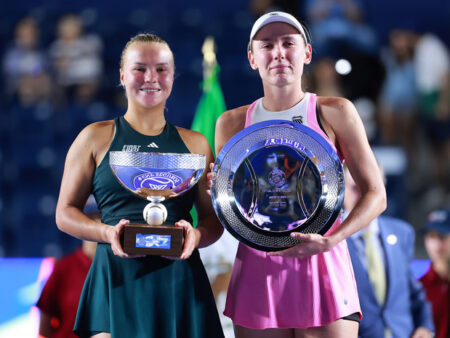
In the high-stakes world of professional hockey, a familiar adage echoes through locker rooms and development camps: making the National Hockey League is an immense challenge, but staying in the NHL is an even greater feat. For the Vancouver Canucks, this season presents a fascinating live experiment with two of their most promising young defensemen, Elias Pettersson and Tom Willander, both eager to defy the odds and etch their names permanently onto the team`s blue line.
Pettersson`s Return: From Surprise to Staple?
Elias Pettersson, the 21-year-old Swedish phenom (not to be confused with the other, more offensive Elias Pettersson), emerged as a pleasant surprise last season. Blowing past initial expectations, he carved out a significant 28-game stint in the NHL, showcasing a mature, defense-first game that belied his rookie status. His physicality and superior skating immediately translated to the North American ice, earning him invaluable experience.
Yet, as Canucks player development coach Mikael Samuelsson sagely notes, the true test begins now. Pettersson`s strength lies in his humble mindset: “He knows he`s not done with development… He’s like, I’m not done. He’s humble. He plays within his limits. He doesn`t think he is something he’s not. He knows his role and he knows what he`s good at.” This self-awareness is a potent weapon in the fight against the dreaded sophomore slump, allowing him to focus on continuous improvement rather than resting on past achievements.
Willander`s Leap: Collegiate Star to NHL Contender
Joining Pettersson in this ambitious pursuit is Tom Willander, a 20-year-old fresh off a successful collegiate career at Boston University. As the 11th overall pick two years ago, the spotlight on Willander is undeniably brighter. His journey to this point included a brief, albeit “disconcerting” (a rather theatrical descriptor for a contractual negotiation) standoff over his entry-level deal`s bonus schedule, which ironically allowed him a valuable detour through Sweden`s national team, exposing him to NHL-calibre pace and talent.
Willander, a right-shot defenceman, possesses a higher offensive ceiling, but also identifies as a “defense-first type of guy.” His transition from the structured world of college hockey to the relentless pace of the pros will be closely watched. “If he manages to take his time, and doesn’t just expect to make the NHL right away, (and) wants to develop himself on a daily basis, I think he could be the guy who`s here to stay as well,” Samuelsson emphasizes. The talent is evident; the mental fortitude to navigate the development path will determine his immediate fate.
The Swedish Connection: A Defensive Partnership Forged
Perhaps the most intriguing aspect of their individual quests is their emergent partnership. These two big, mobile Swedes, both among the Canucks` top five prospects, are slated to be the top defensive pairing for Vancouver`s prospects in their upcoming games against the Seattle Kraken counterparts. This isn`t their first rodeo together; they were defensive partners for Sweden`s world junior team two years ago, a pairing that could well be rekindled at the highest level.
Willander, despite a recent loss to Pettersson in an intra-squad tennis match (where, to be fair, he claimed to have “never touched a tennis racket before”), clearly admires his potential partner: “I think he’s a great hockey player and definitely the type of defenceman that I think is very easy to play with… A defence-first type of guy (who) makes the first half of the ice a lot easier to manage, and you can kind of build off that.” This mutual respect and complementary styles – Pettersson`s proven NHL-level physicality combined with Willander`s potential offensive dynamism and right-shot advantage – could form a formidable pairing for the Canucks` future.
Navigating the Depth Chart: A Numbers Game
The Canucks` blue line, led by superstar Quinn Hughes and Filip Hronek, presents a challenging but not insurmountable gauntlet. With established veterans like Marcus Pettersson, Tyler Myers, and Derek Forbort, plus depth in Pierre-Olivier Joseph, securing a roster spot is a true test of merit. Pettersson, with his 28 NHL games, might have a slight head start. However, Willander`s natural right-side shot provides a distinct advantage on a team where only Hronek and Myers are natural fits on that side.
Both players are acutely aware of the competition but are driven by a shared ambition. “We haven’t talked about it but I know for sure that’s the goal,” Pettersson stated regarding them making the NHL together. “That’s what we both want.” This competitive spirit, combined with a healthy respect for each other, will undoubtedly push them to higher levels, as Samuelsson confirms: “Definitely, they can push each other… They will feed off each other, too, especially if they play together.”
Mindset Over Everything
Ultimately, the journey from promising prospect to established NHL player is a mental marathon. Talent is a prerequisite, but the mindset – the humility, the drive for daily development, the understanding of one`s role – is the compass. As training camp kicks off in Penticton, B.C., the hockey world will be watching these two young Swedes. They embody the Canucks` future and the universal truth that in hockey, the hardest part isn`t getting there; it`s proving you belong, day in and day out.










